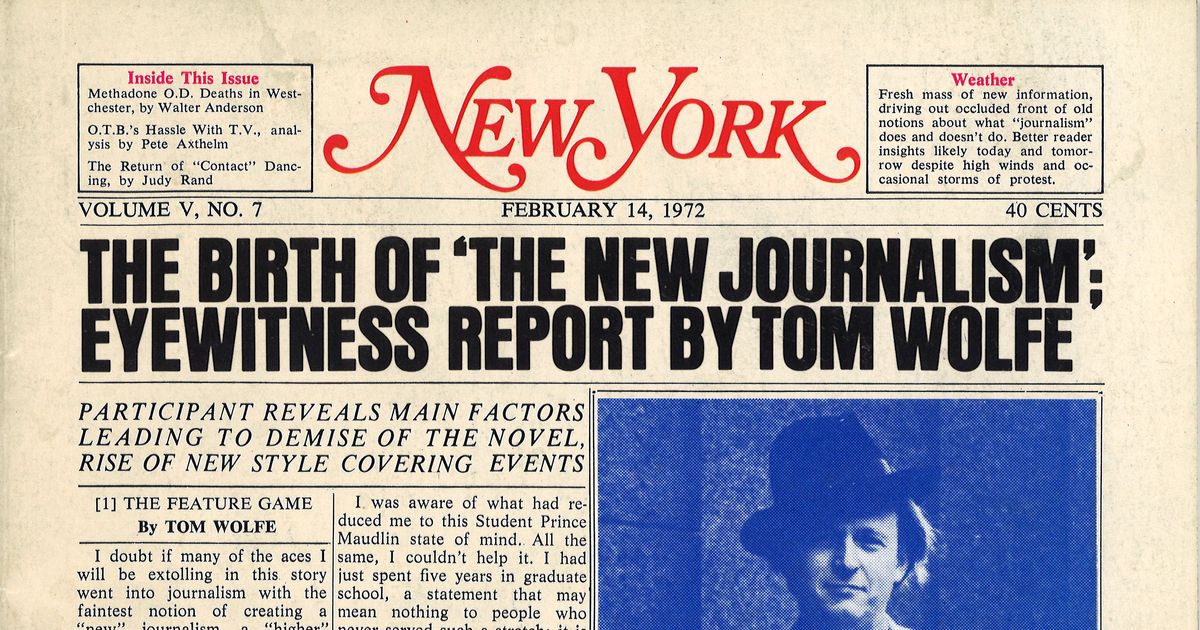6 Easy Facts About News Articles Shown
6 Easy Facts About News Articles Shown
Blog Article
Getting My News Articles To Work
Table of ContentsNews Articles for BeginnersRumored Buzz on News ArticlesNews Articles for BeginnersRumored Buzz on News ArticlesThe Main Principles Of News Articles
Good understanding of various subjects gives trainees an one-upmanship over their peers. Also though electronic and social networks are conveniently accessible, we ought to not fail to remember just how essential it is to check out the newspapers. Moms and dads should attempt and inculcate the habit of checking out a paper as a day-to-day regimen to proceed the tradition of the adored print medium.News stories likewise have at least among the adhering to vital qualities about the designated target market: proximity, prestige, timeliness, human rate of interest, peculiarity, or repercussion. The related term journalese is often made use of, typically pejoratively, to describe news-style writing. One more is headlinese. Papers usually abide by an expository writing style.
Within these limitations, news tales likewise intend to be comprehensive. Amongst the larger and much more reputable newspapers, fairness and balance is a significant aspect in offering information.
Papers with a global target market, for example, have a tendency to make use of an extra official style of writing. News Articles.; usual style guides include the and the United States Information Design Book.
Getting My News Articles To Work
As a guideline, journalists will not use a lengthy word when a brief one will do. They utilize subject-verb-object construction and brilliant, active prose (see Grammar). They provide stories, examples and allegories, and they hardly ever depend on generalizations or abstract concepts. News writers try to avoid making use of the same word more than when in a paragraph (often called an "resemble" or "word mirror").
Nevertheless, headings in some cases leave out the subject (e.g., "Leaps From Watercraft, Catches in Wheel") or verb (e.g., "Cat lady lucky"). A subhead (additionally subhed, sub-headline, subheading, caption, deck or dek) can be either a subordinate title under the major heading, or the heading of a subsection of the article. It is a heading that comes before the major text, or a group of paragraphs of the primary message.

of a write-up topic, source, or interviewee), it is referred to as a pulled quote or pull quote. Extra billboards of any of these types may show up later on in the short article (particularly on subsequent pages) to entice further reading. Journalistic sites sometimes utilize computer animation techniques to swap one billboard for another (e.g.
The smart Trick of News Articles That Nobody is Talking About
Such billboards are additionally used as tips to the short article in other areas of the magazine or website, or as advertisements for the item in various other publication or sites. News release of the Swiss government. Typical framework with title, lead paragraph (recap in bold), other paragraphs (details) and get in touch with information.

Example of a hard-lead paragraph NASA is suggesting another room project. The budget plan requests about $10 billion for the task.
The NASA statement came as the agency asked for $10 billion of appropriations for the More Help job. An "off-lead" is the 2nd crucial front page news of the day. The off-lead shows up either in the leading left corner, or directly listed below the lead on the. To "bury the lead" is to start the post with background details or information of additional importance to the viewers, requiring them to learn more deeply into a write-up than they must have to in order to find the necessary points.
Some Known Details About News Articles
Typical use is that or two sentences each create their own paragraph. Journalists normally define the organization or framework of a news story as an upside down pyramid. The essential and most interesting components of a tale are put at the beginning, with supporting information complying with in order of lessening significance.
It enables individuals to explore a subject to just the deepness that their inquisitiveness takes them, and without the charge of details or subtleties that they can consider unimportant, but still making that details offered to much more interested readers. The inverted pyramid structure likewise allows posts to be cut to any type of approximate size throughout format, to suit the room readily available.
Some authors read this article start their stories with the "1-2-3 lead", yet there are numerous kinds of lead available. A kicker can refer to numerous things: The last story in the news broadcast; a "satisfied" tale to end the show.
Longer short articles, such as magazine cover write-ups and the pieces that lead the inside sections of a newspaper, are called. Function stories differ from straight information in a number of ways. Foremost is the lack of a straight-news lead, the majority of the time. As opposed to using the essence of a tale up front, feature authors may try to draw readers in.
News Articles Things To Know Before You Get This
A function's initial paragraphs commonly connect an intriguing minute go to this web-site or occasion, as in an "anecdotal lead". From the details of an individual or episode, its view swiftly widens to generalities regarding the tale's topic.

The Editor's Toolbox: A Reference Overview for Beginners and Professionals (2001) Allan M. Siegal and William G. Connolly. The New York Times Guidebook of Design and Usage: The Official Design Guide Used by the Writers and Editors of the Globe's Many Reliable Newspaper (2002) M. L. Stein, Susan Paterno, and R.
Report this page